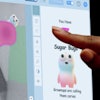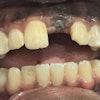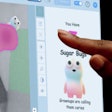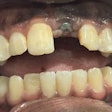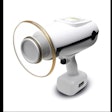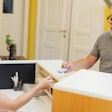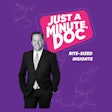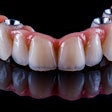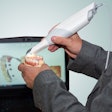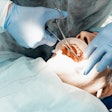

In his session "High-Tech Practice on a Low-Tech Budget" at the ADA meeting on Thursday, he showed a slide of a yellow Lamborghini Countach, which typically sells for around $75,000. Turns out, however, it was a kit car that cost less than $7,000 to build.
"Perception is reality," he said.
His point? That you can add value to your practice with the latest technologies without busting your budget. All it takes is a little ingenuity and some smart shopping.
"If you want to be high tech, you can be," Dr. Jablow, a self-professed technophile (dentechblog.blogspot.com), told a packed audience. "But it doesn't mean everything has to be high tech."
“Patients think flat panels are high-tech, but they don't cost a lot.”
The first thing you have to ask yourself, he added, is why you would want technology in your office."Because it's cool? Sure. But you have to think about what it can do for you and your patients also," he said.
Take computers, for example. According to Dr. Jablow, all U.S. dentists will have to have computers in their operatories by 2015, when mandated electronic health records take effect. So why wait?
"Every year you put it off, the price goes up and the time frame you have to use it goes down," he said. "Computers are the backbone of most of the technology we will be using as dentists. And I don't mean just at the front desk."
Promising that he would keep to a budget of under $10,000, Dr. Jablow began to describe how to build a high-tech practice that can reduce costs, increase efficiencies, and generate new revenues -- starting with flat-panel monitors in the operatories.
"Patients think flat panels are high-tech, but they don't cost a lot," he said. "You can mount one on the wall at a cost of less than $200 for a 22-inch monitor," he said. "And patients love to see digital images pop up on the screen." Make sure the monitor has at least a 500:1 contrast ratio and a good refresh rate, he added.
Flat-panel LCD monitors also can enhance your reception area, according to Dr. Jablow. And here again, the cost is surprisingly affordable.
"I have a 42-inch monitor in my waiting area that I bought at Sam's for $800," he said. "And my patients love it. Use it to entertain and educate."
For example, he uses GuruTV from Henry Schein, which costs about $300 for a two-hour-long DVD that offers dental news and procedure information. A similar product is the Caesy DVD from Patterson. The goal is to inform your patients of the services you offer while entertaining them and relaxing them at the same time.
"It tells them things you didn't even know they were thinking about," Dr. Jablow said. "It inspires questions."
Another tip he offered with regard to computerizing your office is not to worry about replacing or installing all of the computers at once. Instead, "once or twice a year, go out and buy one or two new machines and replace the oldest ones in the office." He also recommends not investing in a dedicated server if you are running fewer than 10 PCs. "You don't need it," he said.
Other affordable high-tech devices he suggests for engaging and distracting your patients include:
- Digital picture frames. "I have these sitting at the front desk," Dr. Jablow said. "They are cheap and easy to buy, and they use standard media. Create your own case slide show. Patients will notice."
- Satellite radio. "With Sirius or XM Radio, you can listen to whatever you want, with no commercials," he said. "And it costs less than $50, plus licensing fees of about $25/month." Some services -- such as Pandora, Shoutcast, Y! Music, and Live365 -- are even available online for free or at minimal cost, he added.
- Patient (in-chair) monitors. "You buy some inexpensive monitors and you can mount them on the wall very cheaply -- the biggest cost is the wiring and the labor," Dr. Jablow said. "The patient can play online video games or watch TV or a DVD." Hand them a wireless mouse so they can control what they watch, add some inexpensive disposable headphones you can get at the Dollar Store, and you're all set, he added.
"It's all about distraction," Dr. Jablow said. "This is the whole idea behind entertaining the patient."
In part II of this two-part series, Dr. Jablow discusses affordable intraoffice communication, patient education software, cameras, digital radiography systems, and anesthesia delivery systems.
